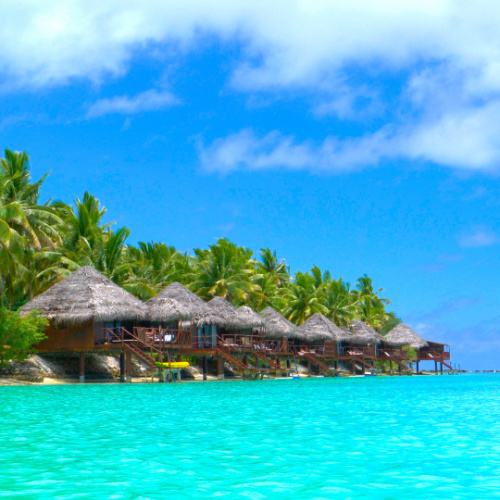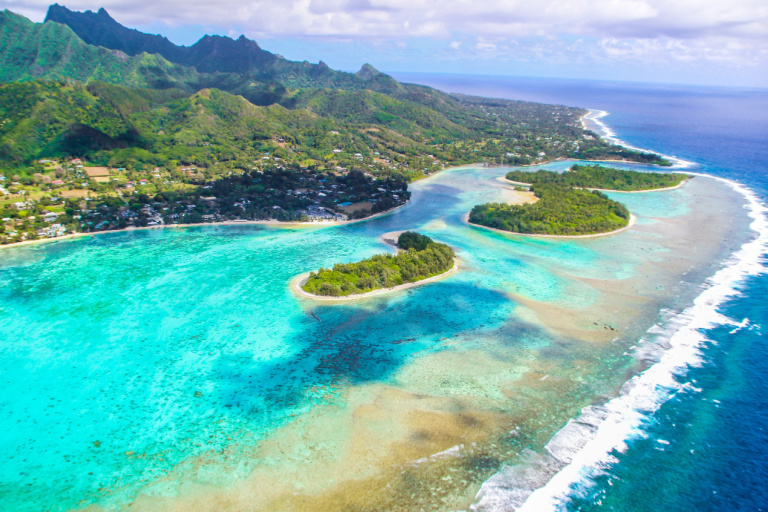
Flystock/Shutterstock
When Is the Best Time to Visit The Cook Islands?
The best time to visit the Cook Islands is during the shoulder seasons of April, May, September, and October.
These months offer a delightful mix of mild, sunny weather, fewer tourists, and more reasonable prices than the peak winter season from June to August.
Why These Months Are Ideal:
- Comfortable Climate: With a tropical climate, the Cook Islands during these shoulder seasons offer mild temperatures, usually in the low to mid-80s Fahrenheit (28-29 degrees Celsius). This weather is perfect for outdoor activities, sightseeing, and simply enjoying the islands’ natural beauty.
- Quieter Experience: These months see fewer visitors, allowing for a more relaxed and personal experience at popular destinations like Rarotonga, Aitutaki, and Muri Lagoon
- Economical Travel: Accommodations, flights, and activities tend to be more budget-friendly during these months compared to the busier winter season.
Seasonal Highlights:
- April to May: Expect warm and sunny days with occasional showers. This is a great time for exploring Rarotonga, swimming in Muri Lagoon, or hiking the Cross Island Track.
- September to October: Similar to April and May, these months also offer warm, sunny weather with occasional rain. It’s a fantastic time for activities like whale watching, sailing, and participating in the vibrant Te Maeva Nui cultural festival in Rarotonga.
While any time is a good time to visit the Cook Islands, April, May, September, and October stand out for their ideal weather, fewer crowds, and better value for money.
 Average Temperatures by Month
Average Temperatures by Month
|
Jan |
Feb |
Mar |
Apr |
May |
Jun |
Jul |
Aug |
Sep |
Oct |
Nov |
Dec |
| Fahrenheit |
83°
|
83°
|
83°
|
81°
|
79°
|
77°
|
75°
|
75°
|
77°
|
80°
|
81°
|
83°
|
| Celsius |
28°
|
28°
|
28°
|
27°
|
26°
|
25°
|
24°
|
24°
|
25°
|
27°
|
28°
|
28°
|
Climate in The Cook Islands
Summer Season in The Cook Islands
Marked by higher temperatures and increased humidity, the wet season sees more frequent, short bursts of rainfall, typically in the late afternoon or evening. The temperatures remain warm despite the rain. This season coincides with the South Pacific cyclone season, though cyclones are rare.
Rainy Season in The Cook Islands
Ironically, the 'rainy season' is the drier, cooler part of the year, making it the peak tourist season. The weather is generally sunny, offering excellent conditions for snorkeling, diving, and exploring the islands' beauty.
Winter Season in The Cook Islands
The Cook Islands don't experience a traditional winter with cold weather. The dry season here is the closest to winter, with slightly cooler temperatures but still maintaining a warm, tropical climate. This season is well-suited for beach and water activities, offering a tropical winter experience unlike the colder climates elsewhere.
Our Recommendations
| Destination |
Jan |
Feb |
Mar |
Apr |
May |
Jun |
Jul |
Aug |
Sep |
Oct |
Nov |
Dec |
| The Cook Islands |
 |
 |
 |
 |
 |
 |
 |
 |
 |
 |
 |
 |






